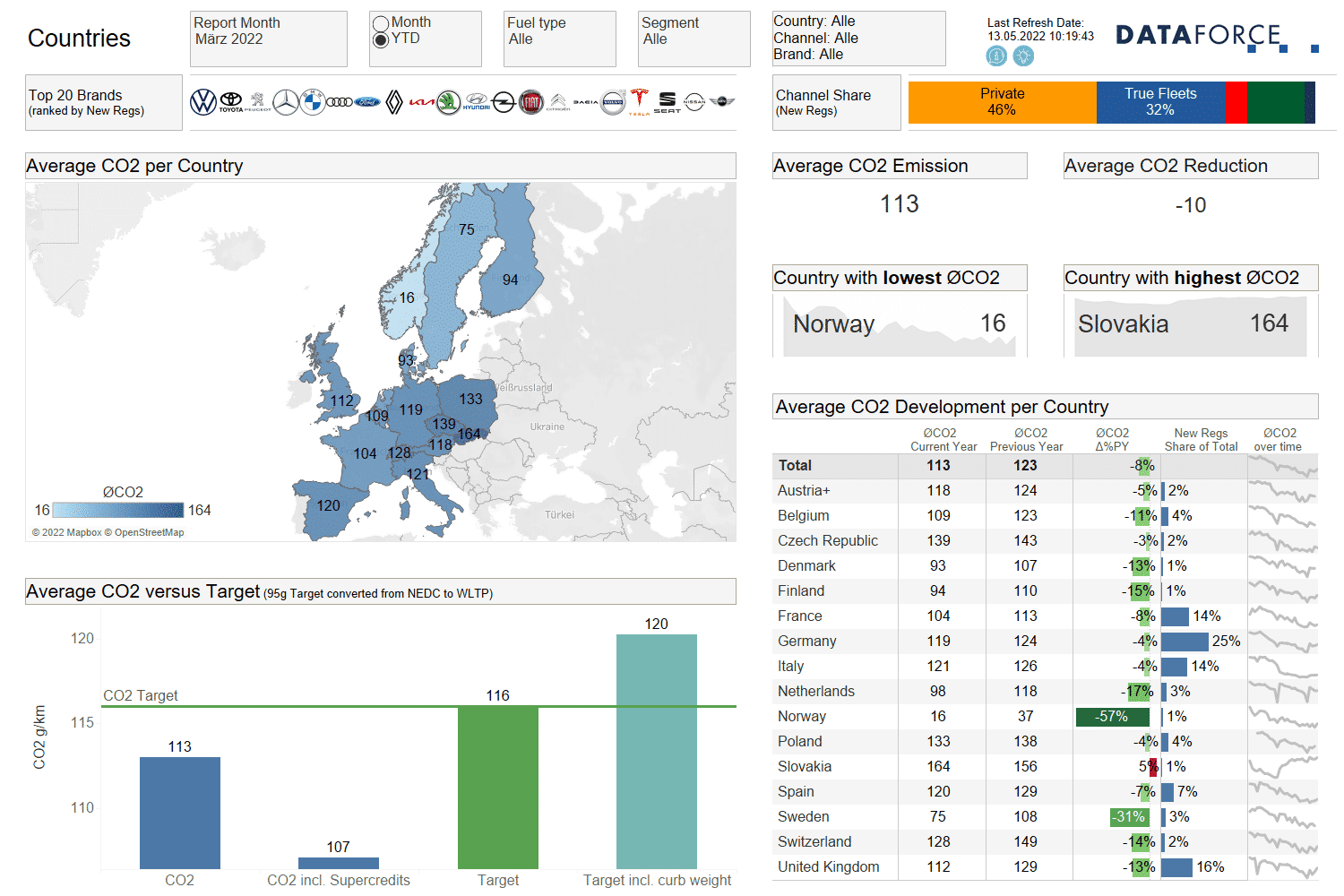- The total European market for passenger cars (PCs) has no problem to comply with EU CO2 targets.
- The CO2 emissions of light commercial vehicles (LCVs) are still above the limits which is due to high pollution of large utilities.
- Stellantis stands out positively and even complies with the European CO2 limits for LCVs.
Positive CO2 development for passenger cars
Recently, the Environment Committee of the EU Parliament voted on a ban on combustion cars from 2035 in order to reduce the CO2 emissions of automobile mobility to zero.
The target seems ambitious, but in the passenger car segment the European CO2 development is going according to plan, as the Dataforce Road2Zero Dashboard shows. With a reduction of 10 g/km CO2 compared to the previous year’s quarter, the EU-wide average of 113 g/km CO2 in Q1 2022 was below the WLTP target of 116 g/km CO2. Considering the Supercredits, which are still permitted in 2022, the figure is even significantly lower (107 g/km CO2). However, the question now arises as to how the whole thing will look for light commercial vehicles.




